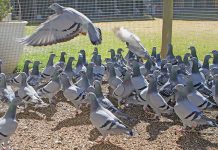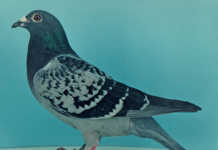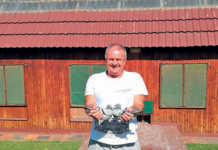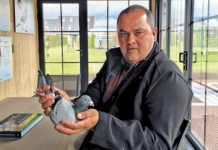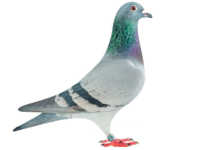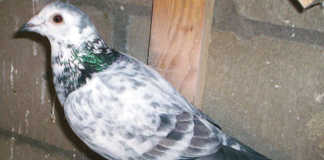All race events in South Africa are scheduled for Saturdays. Most distances on the programme of the various organisations kick off at about 200km for the first race. After the first race, the distances are gradually increased to about 1 000km.
The programme makes room for a short-, middle-, and long-distance series, which can consist of anything between 20 to 30 race events. There are 12 short-, 12 middle-, and 13 long-distance races on the Transvaal Racing Pigeon Federation programme. If you decide to participate in the entire programme, you may need a larger race team of at least 60 to 80 pigeons.
The value of teamwork
At least 50% of the team should consist of pigeons aged two years and older if you’re going to attempt the whole long-distance programme. You can’t expect to race the same group of pigeons week in and week out. They need time to recover. Pigeons which maintain form can be doubled back for a few weeks on the shorter distances until they show signs of falling out of condition. Fanciers have had success in doubling back a racer in the middle- and long-distances, although this is the exception to the rule and only worked for them because the pigeons could handle it genetically. I’m of the school that believes you can improve your results with specialised breeding for the different distances and weather conditions.
Points League Championships
There are various Points League Championship categories allocated to the different distances. If you’re going to concern yourself with the first bird to count category, all you need is one good bird out front on race day to accumulate your point scores. So you can get away with a small race team of 40 to 60 pigeons. It won’t be necessary to enter a full team each weekend. If you know your pigeons well, you can attend to pre-selected individuals within the team and prepare them for specific races. These pigeons are called bankers. If, however, you’re not an experienced fancier and haven’t learnt the skills of specialised individual training to get a few bankers ready, you’re left with broad spectrum group treatment.
The potential future bankers will soon emerge from the flock and you can start to focus on them. Chasing the All-Bird-to-Count Points League will mean that you’ll have to score with as many pigeons as possible in each race.
Study the winning race velocities
Race velocities are influenced by the weather patterns and geographical positions to your loft location. They’re also influenced by the interruption of mountainous terrain if it’s in the line of flight. In certain provinces, the average race velocity boasts an average speed of about 1 250m/min for the season, while in others it could be as fast as 1 350m/min or below 1 250m/min, which is rather tough. You will need to study the expected velocity and train your own race team accordingly.
Sprint pigeon racing in perspective
There’s a general misconception that short-distance pigeon racing is “sprinting”. The sprinting concept means that a race is fast-paced or easy, which in reality it isn’t always. A middle- or long-distance race can also be fast paced, while a short-distance race can sometimes be extremely tough. The importance of this overview isn’t the speed, but the combined time the pigeons spend on the wing to complete the race.
There are fanciers who consider a fast-paced race over the middle distance just as exhausting for a pigeon as a slow-paced race over a short distance. The preparation for each race differs. As we can’t always trust the weather predictions, it’s wise to train with surprise changes in the weather in mind.


